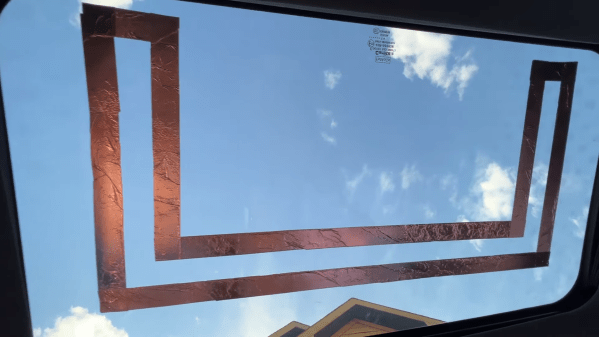Thanks a lot, Elon. Or maybe not, depending on how this report that China used Starlink signals to detect low-observable targets pans out. There aren’t a lot of details, and we couldn’t find anything approximating a primary source, but it seems like the idea is based on forward scatter, which is when waves striking an object are deflected only a little bit. The test setup for this experiment was a ground-based receiver listening to the downlink signal from a Starlink satellite while a DJI Phantom 4 Pro drone was flown into the signal path. The drone was chosen because nobody had a spare F-22 or F-35 lying around, and its radar cross-section is about that of one of these stealth fighters. They claim that this passive detection method was able to make out details about the drone, but as with most reporting these days, this needs to be taken with an ample pinch of salt. Still, it’s an interesting development that may change things up in the stealth superiority field.
stealth10 Articles
Hidden Gutter Antenna Keeps HOA Happy
The United States and a few other countries have an astounding array of homeowners’ associations (HOAs), local organizations that exert an inordinate influence on what homeowners can and can’t do with their properties, with enforcement mechanisms up to foreclosure. In the worst cases they can get fussy about things like the shade of brown a homeowner can paint their mailbox post, so you can imagine the problems they’d have with things like ham radio antennas. [Bob] aka [KD4BMG] has been working on tuning up his rain gutters to use as “stealth” antennas to avoid any conflicts with his HOA.
With the right antenna tuner, essentially any piece of metal can be connected to a radio and used as an antenna. There are a few things that improve that antenna’s performance, though. [Bob] already has an inconspicuous coax connector mounted on the outside of his house with an antenna tuner that normally runs his end-fed sloper antenna, which also looks like it includes a fairly robust ground wire running around his home. All of this is coincidentally located right beside a metal downspout, so all this took to start making contacts was to run a short wire from the tuner to the gutter system.
With the tuner doing a bit of work, [Bob] was able to make plenty of contacts from 10 to 80 meters, with most of the contacts in the 20 – 30 meter bands. Although the FCC in the US technically forbids HOAs from restricting reasonable antennas, if you’d rather not get on the bad side of your least favorite neighbors there are a few other projects from [Bob] to hide your gear.
Chinese Subs May Be Propelled Silently By Lasers
If sharks with lasers on their heads weren’t bad enough, now China is working on submarines with lasers on their butts. At least, that’s what this report in the South China Morning Post claims, anyway.
According to the report, two-megawatt lasers are directed through fiber-optic cables on the surface of the submarine, vaporizing seawater and creating super-cavitation bubbles, which reduce drag on the submarine. The report describes it as an “underwater fiber laser-induced plasma detonation wave propulsion” system and claims that the system could generate up to 70,000 newtons of thrust, more than one of the turbofan engines on a 747.
The report (this proxy can get around the paywall) claims that the key to the system are the tiny metal spheres that direct the force of the cavitation implosion to propel the submarine. Similar to a magnetohydrodynamic drive (MHD), there’s no moving parts to make noise. Such a technology has the potential to make China’s submarines far harder to detect.
Looking for more details, we traced the report back to the original paper written by several people at Harbin Engineering University, entitled “Study on nanosecond pulse laser propulsion microspheres based on a tapered optical fiber in water environment“, but it’s still a pre-print. If you can get access to the full paper, feel free to chime in — we’d love to know if this seems like a real prospect or just exaggerated reporting by the local propaganda media.
[Image via Wikimedia Commons]
An Open-Source Ebike Motor Controller
DIY e-bikes are often easy to spot. If they’re not built out of something insane like an old washing machine motor, the more subtle kits that are generally used still stand out when compared to a non-assisted bike. The motors tend to be hub- or mid-drive systems with visible wires leading to a bulky battery, all of which stand out when you know what to look for. To get a stealthy ebike that looks basically the same as a standard bicycle is only possible with proprietary name-brand solutions that don’t lend themselves to owner repair or modification, but this one has at least been adapted for use with an open source motor controller.
The bike in use here is a model called the Curt from Estonian ebike builder Ampler, which is notable in that it looks indistinguishable from a regular bicycle with the exception of the small 36-volt, 350-watt hub motor somewhat hidden in the rear wheel. [BB8] decided based on no reason in particular to replace the proprietary motor controller with one based on VESC, an open-source electric motor controller for all kinds of motors even beyond ebikes. Installed on a tiny Arduino, it fits inside the bike’s downtube to keep the stealthy look and can get the bike comfortably up to around 35 kph. It’s also been programmed to turn on the bike’s lights if the pedals are spun backwards, and this method is also used to change the pedal assist level, meaning less buttons and other user-interface devices on the handlebars. Continue reading “An Open-Source Ebike Motor Controller”
A Quick And Stealthy Mobile Slot Antenna From Copper Tape
[Ben Eadie (VE6SFX)] is at it again with the foil tape, and this time he’s whipped up a stealthy mobile sunroof antenna for the amateur radio operator with the on-the-go lifestyle.
You may recall [Ben]’s recent duck tape antenna for the 70-cm ham band, an ultra-lightweight design that lends itself to easy packing for portable operation. The conductors in that antenna were made from copper foil tape, a material that’s perfect for all sorts of specialized applications, like the slot antenna that he builds in the video below. In the ham world, slot antennas are most frequently seen cut into the main reflector of a direct satellite dish, often in hopes of avoiding the homeowner association’s antenna police. Even in the weird world of RF, it’s a strange beast because it relies on the absence of material in a large planar (or planar-ish) conductive surface.
Rather than grabbing an angle grinder to make a slot in the roof of his car, [Ben] created a “virtual” slot with copper tape on the inside of his car’s sunroof. His design called for a 39″ (0.99-m) slot, so he laid out a U-shaped slot to fit the window and outlined it with copper foil tape. His method was a little complex; he applied the copper tape to a transparent transfer film first, then stuck the whole thing to the underside of the glass in one go. It didn’t quite go as planned, but as he learned in the duck tape antenna, the copper tape makes it easy to repair mistakes. A BNC connector with pigtails is attached across the slot about 4″ (10 cm) up from the end of one of the short legs of the slot; yes, this looks like a dead short, but such are the oddities of radio.
Is it a great antenna? By the numbers on [Ben]’s NanoVNA, not really. But any antenna that gets you heard is a good antenna, and this one was more than capable in that regard. We’ll have to keep this in mind for impromptu antennas and for those times when secrecy is a good idea.
Continue reading “A Quick And Stealthy Mobile Slot Antenna From Copper Tape”
Active Camouflage Material Shows Promise At Hiding From Infrared Or Visual Detection
An invisibility cloak may seem like science fiction, but despite that, many scientists and engineers have put much time into developing the concept, pushing it closer to reality. A device which detects the nature of its surroundings and changes its own properties to blend in may be complex, but a multitude of examples in the animal world show that it’s not impossible to achieve.
A team from Seoul National University recently developed a flexible material designed in part as a flexible “cloaking” material. We’ll take a look at the underlying concept behind such devices below, and look at how this work furthers the state of the art in the field.
Plasma “Ghosts” May Help Keep Future Aircraft Safe
Air-to-air combat or “dogfighting” was once a very personal affair. Pilots of the First and Second World War had to get so close to land a hit with their guns that it wasn’t uncommon for altercations to end in a mid-air collision. But by the 1960s, guided missile technology had advanced to the point that a fighter could lock onto an enemy aircraft and fire before the target even came into visual range. The skill and experience of a pilot was no longer enough to guarantee the outcome of an engagement, and a new arms race was born.

Naturally, the move to guided weapons triggered the development of defensive countermeasures that could confuse them. If the missile is guided by radar, the target aircraft can eject a cloud of metallic strips known as chaff to overwhelm its targeting system. Heat-seeking missiles can be thrown off with a flare that burns hotter than the aircraft’s engine exhaust. Both techniques are simple, reliable, and have remained effective after more than a half-century of guided missile development.
But they aren’t perfect. The biggest problem is that both chaff and flares are a finite resource: once the aircraft has expended its stock, it’s left defenseless. They also only work for a limited amount of time, which makes timing their deployment absolutely critical. Automated dispensers can help ensure that the countermeasures are used as efficiently as possible, but sustained enemy fire could still deplete the aircraft’s defensive systems if given enough time.
In an effort to develop the ultimate in defensive countermeasures, the United States Navy has been working on a system that can project decoy aircraft in mid-air. Referred to as “Ghosts” in the recently published patent, several of these phantom aircraft could be generated for as long as the system has electrical power. History tells us that the proliferation of this technology will inevitably lead to the development of an even more sensitive guided missile, but in the meantime, it could give American aircraft a considerable advantage in any potential air-to-air engagements.
Continue reading “Plasma “Ghosts” May Help Keep Future Aircraft Safe”


















